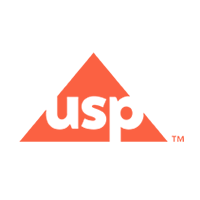USP Class VI
What is USP?
The U.S. Pharmacopeial Convention (USP) is a scientific organisation that focuses on setting and developing standards for healthcare, food ingredients, medications, dietary supplements, and medical technologies.

What is USP Class VI?
The sequence of tests is made up of six classes, and Class VI is deemed the most rigorous and thorough. USP Class VI applies to one of the six classifications for plastics from General Chapter 88 of the United States Pharmacopeia and National Formulary (USP-NF). Chapter 88 sets out standards for testing and certification of a material to be utilised in a medical device. Bio-compatibility is a requirement for rubber components used in medical equipment and devices for surgical application as they may come into contact with human tissue. The main objective of Class VI tests is to establish the absence of toxic chemicals that may migrate out of elastomer materials resulting in detrimental health effects.
What are the USP Class VI Testing Methods?
USP Class VI Chapter 88 relates to in vivo biological reactivity tests, its purpose is to determine the biological response impact of elastomeric materials on live animals. It consists of 3 testing requirements:
- Systemic Injection Test
Sample of the compound is prepared with specific extraction fluids like vegetable oil and polyethylene glycol is applied to the skin, inhaled, or administered orally. This test measures toxicity and irritation.
- Intracutaneous Test
Sample of the compound is in contact with live subdermal tissue (the tissue which the medical device/equipment is planned to contact). This test measures toxicity and localised irritation.
- Implantation
Intramuscular implantation of the compound into the specimen. This test measures toxicity, infection, and irritation.
Are there any additional tests?
Yes. Apart from showing an exceptionally low toxicity level by getting through these 3 tests, the compound is subjected to various temperature tests for a fixed amount of time. Initially, it is applied at +50°C (122°F) for 72 hours, then at +70°C (158°F) for 24 hours, and lastly at +121°C (250°F) for 1 hour.
In order for a compound to pass USP Class VI standards, it must demonstrate a very low toxicity level by meeting all test requirements. Testing for compliance concerns an assessment of the influence of the compound and substances extractable on tissue.
Who uses Class VI elastomers?
- Medical and Pharmaceutical industries
- Biopharmaceutical Manufacturers for their process equipment
- Medical facilities as components in pumps and fluid transfer
- Medical specialists for direct applications
- Single-use process components – tubing, single-use bags, plastic connectors, silicone
- Sanitary Tri-Clamp® Gaskets
- Hygienic diaphragm valves
- Sanitary pumps
What USP Class VI standard products does M Barnwell Services provide?
- Butterfly Valve Seals – The Pipe Seal, the Operating Shaft Seal, and the Flange Seal
- Camlock Gaskets
- Custom-made Components
- Diaphragm Seals – Rolling and Flat
- D Ring Seals – for pipe connections
- Encapsulated O Rings
- Hygienic Clamp Seals – HyClamp / Tri-Clover / Tri-Clamp / PolyClamp
- O Rings
- PTFE Seals – Non-stick solutions
- RJT Seals – Ring Joint Type O Ring Seals
- SMS 1149 Seals – Swedish Metric Standard
- X-Ray and Metal Detectable Seals
Which USP chapters apply to elastomers?
There are 3 chapters, which are corresponding to elastomers, plastics, and polymeric materials.
- Chapter 87 Biological reactivity in vitro testing
- Chapter 88 Biological reactivity in vivo testing
- Chapter 381 Physiochemical tests – closures for injections
M Barnwell Services produces Sanitary O Rings and other sealing products from a range of 15 compliant elastomers.
If you require further information regarding our range of products and/or services, please contact a member of the team.
M Barnwell Services endeavour to make sure that all content is correct. Manufacturing partners assisted with the creation of this page. E & OE. For more detailed information visit the USP organization website.